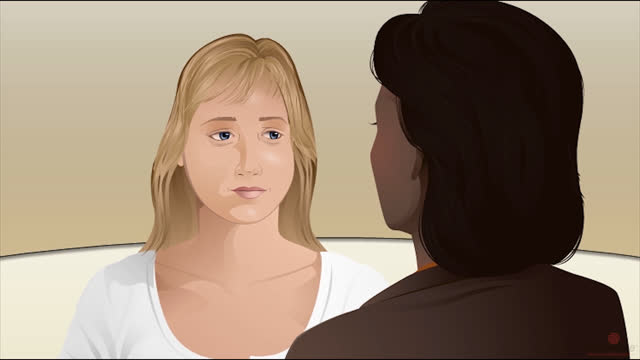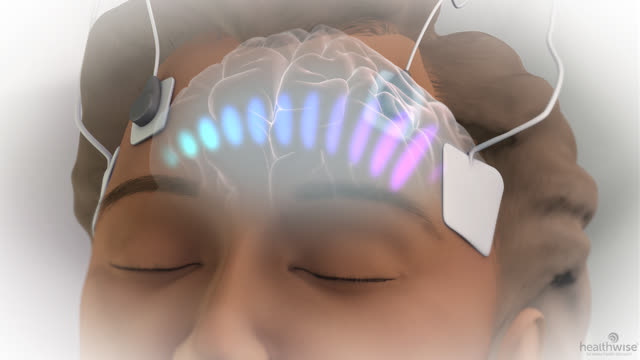Electroconvulsive Therapy (ECT)
Treatment Overview
Electroconvulsive therapy (ECT) is a procedure used to treat severe depression. It may be used in people who have symptoms such as delusions, hallucinations, or suicidal thoughts or when other treatments such as psychotherapy and antidepressant medicines have not worked. It is also used for other psychiatric and neurological conditions, such as schizophrenia and Parkinson’s disease.
Before ECT, you are given anesthesia to put you in a sleepy state, and you are given medicines to relax your muscles. Then an electrical current is briefly sent to the brain through electrodes placed on the temples or elsewhere on the head, depending on the condition and type of ECT. The electrical stimulation, which lasts up to 8 seconds, produces a short seizure. Because of anesthesia, the seizure activity related to ECT does not cause the body to convulse.
It is not known exactly how this brain stimulation helps treat depression. ECT probably works by altering brain chemicals (similarly to medicines), including neurotransmitters like serotonin, natural pain relievers called endorphins, and catecholamines such as adrenaline.
ECT treatments are usually done 2 to 3 times a week for 2 to 3 weeks. Maintenance treatments may be done one time each week, tapering down to one time each month. They may continue for several months to a year, to reduce the risk of relapse. ECT is usually given in combination with medicine, psychotherapy, family therapy, and behavioral therapy.
What To Expect
Because of the effects of anesthesia, you may not remember the procedure. You may experience some confusion, nausea, headache, and jaw pain immediately following ECT. These effects may last several hours. You may also experience short-term memory loss. This effect should gradually get better within several weeks.
Why It Is Done
ECT is used for severe depression and other psychiatric or neurological conditions (such as bipolar disorder, Parkinson’s disease, or schizophrenia).
Sometimes ECT is used for older adults who are taking multiple medicines for other illnesses and who are not able to take additional medicines for depression. And sometimes ECT is used for people who cannot tolerate the side effects of the medicines for depression.
How Well It Works
Studies have shown that ECT is an effective short-term treatment for severe depression. ECT may be used after other treatments have not worked.footnote 1
It is important to have follow-up treatment with medicine or maintenance ECT to reduce the risk of relapse.
Risks
In rare cases, ECT may increase blood pressure, cause changes in heart rhythm, or produce seizures that last longer than expected. These physiologic changes typically occur right away after the ECT treatment and can be managed by the health professionals doing the procedure, if needed. Often, though, these changes resolve quickly without treatment.
The risks of untreated, severe depression (refractory depression) are often greater than the risks of ECT.
Other side effects of ECT may include headaches, muscle pain, nausea, and short-term and possibly long-term memory problems.
References
Citations
- National Institute for Health and Clinical Excellence (NICE) (2003). The clinical effectiveness and cost effectiveness of electroconvulsive Therapy (ECT) for depressive illness, schizophrenia, catatonia and mania. London: National Institute for Health and Clinical Excellence (NICE). Available online: http://www.nice.org.uk/TA059.
Credits
Current as of: May 28, 2019
Author: Healthwise Staff
Medical Review:Kathleen Romito, MD – Family Medicine & Lisa S. Weinstock, MD – Psychiatry
Current as of: May 28, 2019
Author: Healthwise Staff
Medical Review:Kathleen Romito, MD – Family Medicine & Lisa S. Weinstock, MD – Psychiatry
This information does not replace the advice of a doctor. Healthwise, Incorporated, disclaims any warranty or liability for your use of this information. Your use of this information means that you agree to the Terms of Use. Learn how we develop our content.



